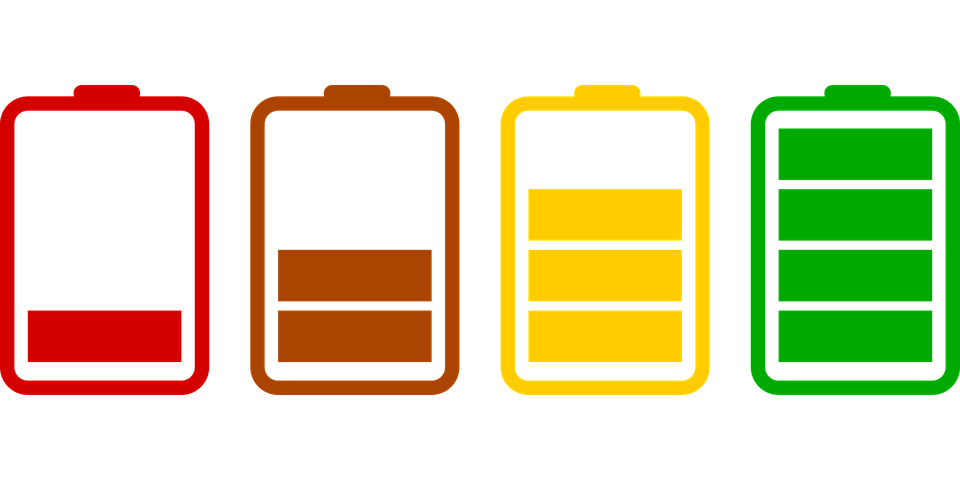
Secondary Rechargeable Batteries
Lead Acid — One of the oldest rechargeable battery systems; is rugged, forgiving if abused and economical in price; has a low specific energy and limited cycle life. Lead acid is used for wheelchairs, golf cars, personnel carriers, emergency lighting and uninterruptible power supply (UPS).
Nickel-cadmium (NiCd) — Mature and well understood; is used where long service life, high discharge current, extreme temperatures and economical price are of importance. Due to environmental concerns, NiCd is being replaced with other chemistries. Main applications are power tools, two-way radios, aircraft and UPS.
Nickel-metal-hydride (NiMH) — A practical replacement for NiCd; has higher specific energy with fewer toxic metals. NiMH is used for medical instruments, hybrid cars and industrial applications. NiMH is available in AA and AAA cells for consumer use.
Lithium-ion (Li ion) — Most promising battery systems; is used for portable consumer products as well as electric powertrains for vehicles; is more expensive than nickel- and lead acid systems and needs protection circuit for safety.
The lithium-ion family is divided into three major battery types, so named by their cathode oxides, which are cobalt, manganese and phosphate. The characteristics of these Li-ion systems are as follows.
Lithium-ion-cobalt or lithium-cobalt (LiCoO2): Has high specific energy with moderate load capabilities and modest service life. Applications include cell phones, laptops, digital cameras and wearable products.
Lithium-ion-manganese or lithium-manganese (LiMn2O4): Is capable of high charge and discharge currents but has low specific energy and modest service life; used for power tools, medical instruments and electric powertrains.
Lithium-ion-phosphate or lithium-phosphate (LiFePO4): Is similar to lithium-manganese; nominal voltage is 3.3V/cell; offers long cycle life, has a good safe record but exhibits higher self-discharge than other Li-ion systems.
There are many other lithium-ion based batteries. Missing in the list is also the popular lithium-ion-polymer, or Li-polymer. While Li-ion systems get their name from their unique cathode materials, Li-polymer differs by having a distinct architecture. Nor is the rechargeable lithium-metal mentioned. This battery requires further development to control dendrite growth, which can compromise safety. Once solved, Li-metal will become an alternative battery choice with extraordinary high specific energy and good specific power.
Table 1 compares the characteristics of four commonly used rechargeable battery systems showing average performance ratings at time of publication.
Table 1: Characteristics of commonly used rechargeable batteries
Note: the figures are based on average ratings of commercial batteries.
1 Internal resistance of a battery pack varies with milliampere-hour (mAh) rating, wiring and number of cells. Protection circuit of lithium-ion adds about 100mΩ.
2 Based on 18650 cell size. Cell size and design determines internal resistance.
3 Cycle life is based on battery receiving regular maintenance.
4 Cycle life is based on the depth of discharge (DoD). Shallow DoD improves cycle life.
5 Self-discharge is highest immediately after charge. NiCd loses 10% in the first 24 hours, then declines to 10% every 30 days. High temperature increases self-discharge.
6 Internal protection circuits typically consume 3% of the stored energy per month.
7 The traditional voltage is 1.25V; 1.2V is more commonly used.
8 Low internal resistance reduces the voltage drop under load and Li-ion is often rated higher than 3.6V/cell. Cells marked 3.7V and 3.8V are fully compatible with 3.6V.
9 Capable of high current pulses; needs time to recuperate.
10 Do not charge regular Li-ion below freezing.
11 Maintenance may be in the form of equalizing or topping charge to prevent sulfation.
12 Cut-off if less than 2.20V or more than 4.30V for most Li-ion; different voltage settings apply for lithium-iron-phosphate.